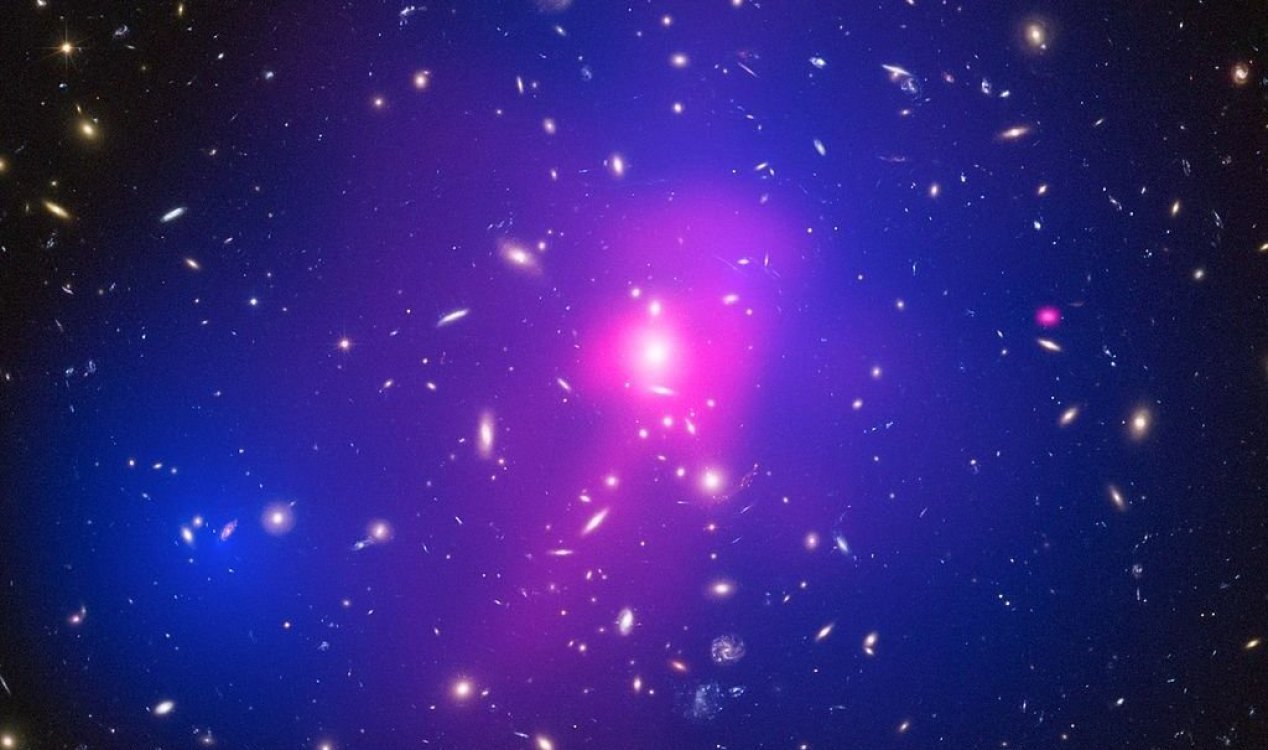Space & Astronomy
February 12, 2023 · 9 comments
9 comments

The nature of dark matter remains a mystery. Image Credit: Smithsonian Institute
Despite concerted efforts, astronomers have been unable to observe dark matter directly because it does not absorb, emit or reflect any electromagnetic radiation, thus making it impossible to see.
Recently, astronomers detected the presence of a previously undiscovered dwarf galaxy known as FAST J0139+4328 which is situated 94 million light-years from the Earth.
What makes this galaxy particularly intriguing is that it does not appear to be emitting any visible light whatsoever and seems, in fact, to be made up almost entirely of dark matter.
This type of galaxy is known - unsurprisingly - as a dark galaxy.
"These findings provide observational evidence that FAST J0139+4328 is an isolated dark dwarf galaxy," scientists from the Chinese Academy of Sciences in Beijing wrote in a new paper.
"This is the first time that an isolated dark galaxy has been detected in the nearby universe."
Because we still don't understand the nature of dark matter, it is similarly difficult to understand exactly how a galaxy like this forms and what role dark matter plays in the formation of galaxies like our own.
Some scientists even question whether dark matter actually exists at all and whether some other phenomenon could explain the discrepancies that dark matter is thought to solve.
Perhaps this newly discovered dark galaxy will provide clues that will one day help to solve the mystery once and for all.
Source: Science Alert | Comments (9)
Mystery surrounds 'dark' galaxy that emits no visible light at all
By T.K. RandallFebruary 12, 2023 ·
 9 comments
9 comments
The nature of dark matter remains a mystery. Image Credit: Smithsonian Institute
Astronomers have identified a very unusual galaxy that could help improve our understanding of dark matter.
The precise nature of dark matter and dark energy, which are thought to account for up to 96% of the observable universe, remains one of the most important unsolved mysteries in modern physics.Despite concerted efforts, astronomers have been unable to observe dark matter directly because it does not absorb, emit or reflect any electromagnetic radiation, thus making it impossible to see.
Recently, astronomers detected the presence of a previously undiscovered dwarf galaxy known as FAST J0139+4328 which is situated 94 million light-years from the Earth.
What makes this galaxy particularly intriguing is that it does not appear to be emitting any visible light whatsoever and seems, in fact, to be made up almost entirely of dark matter.
This type of galaxy is known - unsurprisingly - as a dark galaxy.
"This is the first time that an isolated dark galaxy has been detected in the nearby universe."
Because we still don't understand the nature of dark matter, it is similarly difficult to understand exactly how a galaxy like this forms and what role dark matter plays in the formation of galaxies like our own.
Some scientists even question whether dark matter actually exists at all and whether some other phenomenon could explain the discrepancies that dark matter is thought to solve.
Perhaps this newly discovered dark galaxy will provide clues that will one day help to solve the mystery once and for all.
Source: Science Alert | Comments (9)

The Unexplained Mysteries
Book of Weird News
AVAILABLE NOW
Take a walk on the weird side with this compilation of some of the weirdest stories ever to grace the pages of a newspaper.
Click here to learn more

Support us on Patreon
BONUS CONTENTFor less than the cost of a cup of coffee, you can gain access to a wide range of exclusive perks including our popular 'Lost Ghost Stories' series.
Click here to learn more
Extraterrestrial Life and The UFO Phenomenon
Spirituality, Religion and Beliefs
United States and the Americas
Israel, Palestine and the Middle-East
Total Posts: 7,779,909 Topics: 325,659 Members: 203,950
Not a member yet ? Click here to join - registration is free and only takes a moment!
Not a member yet ? Click here to join - registration is free and only takes a moment!



































Please Login or Register to post a comment.